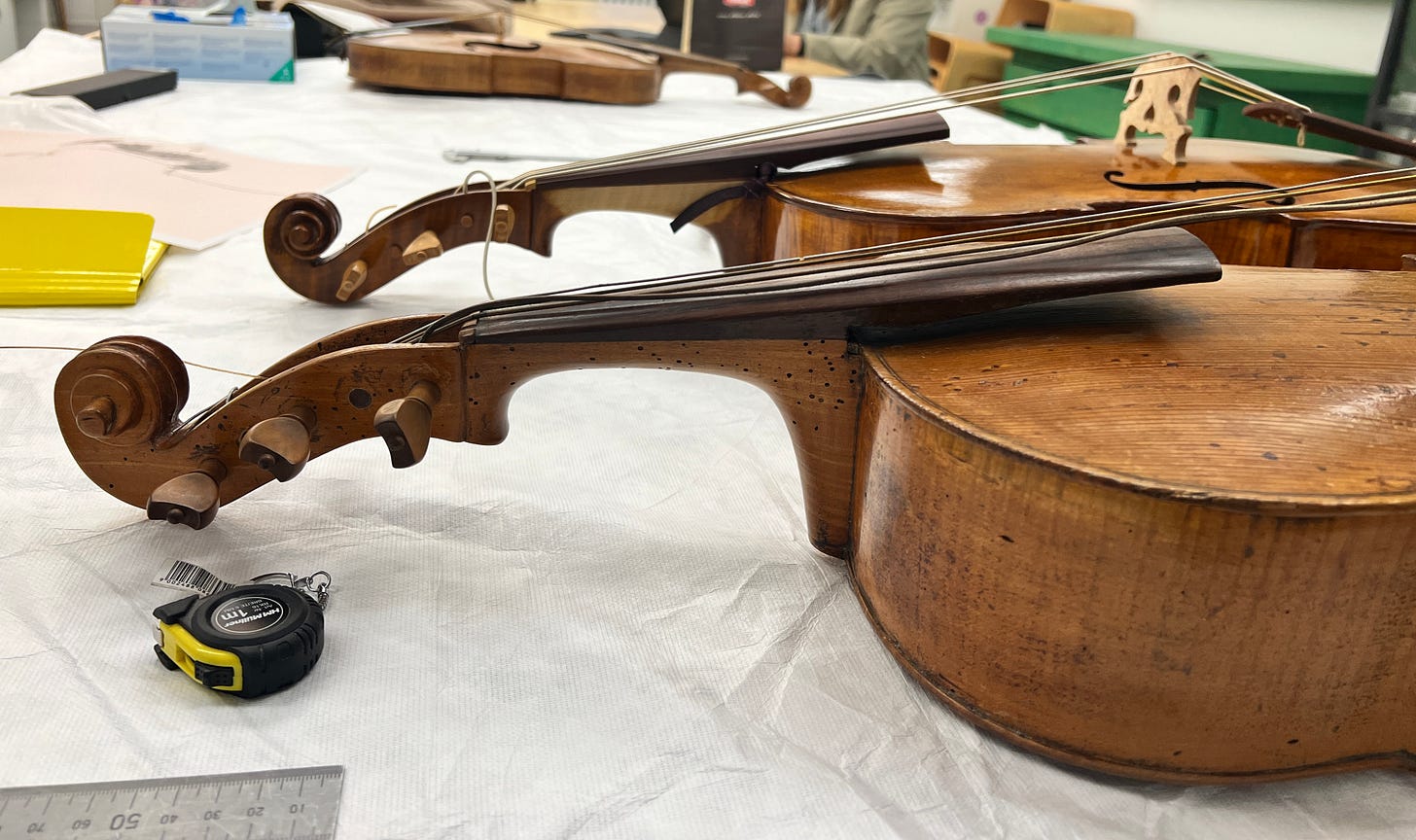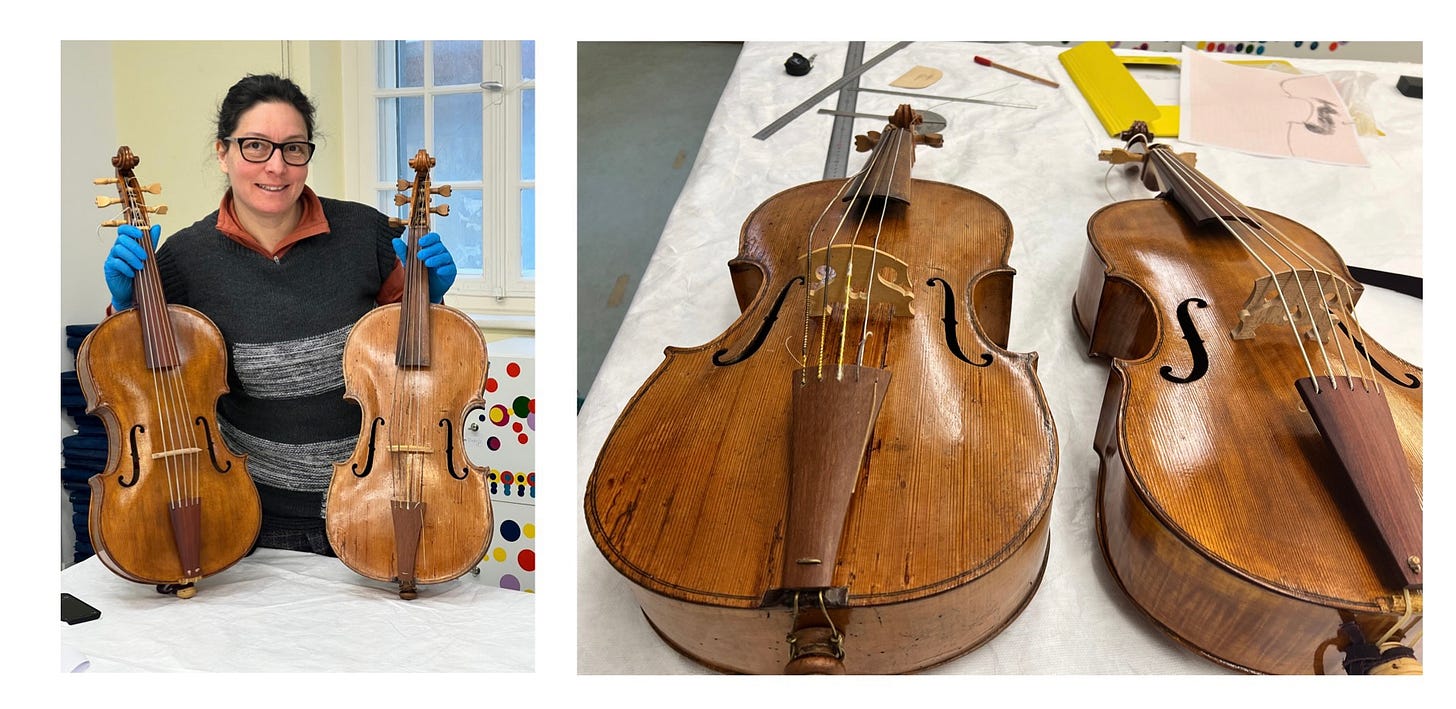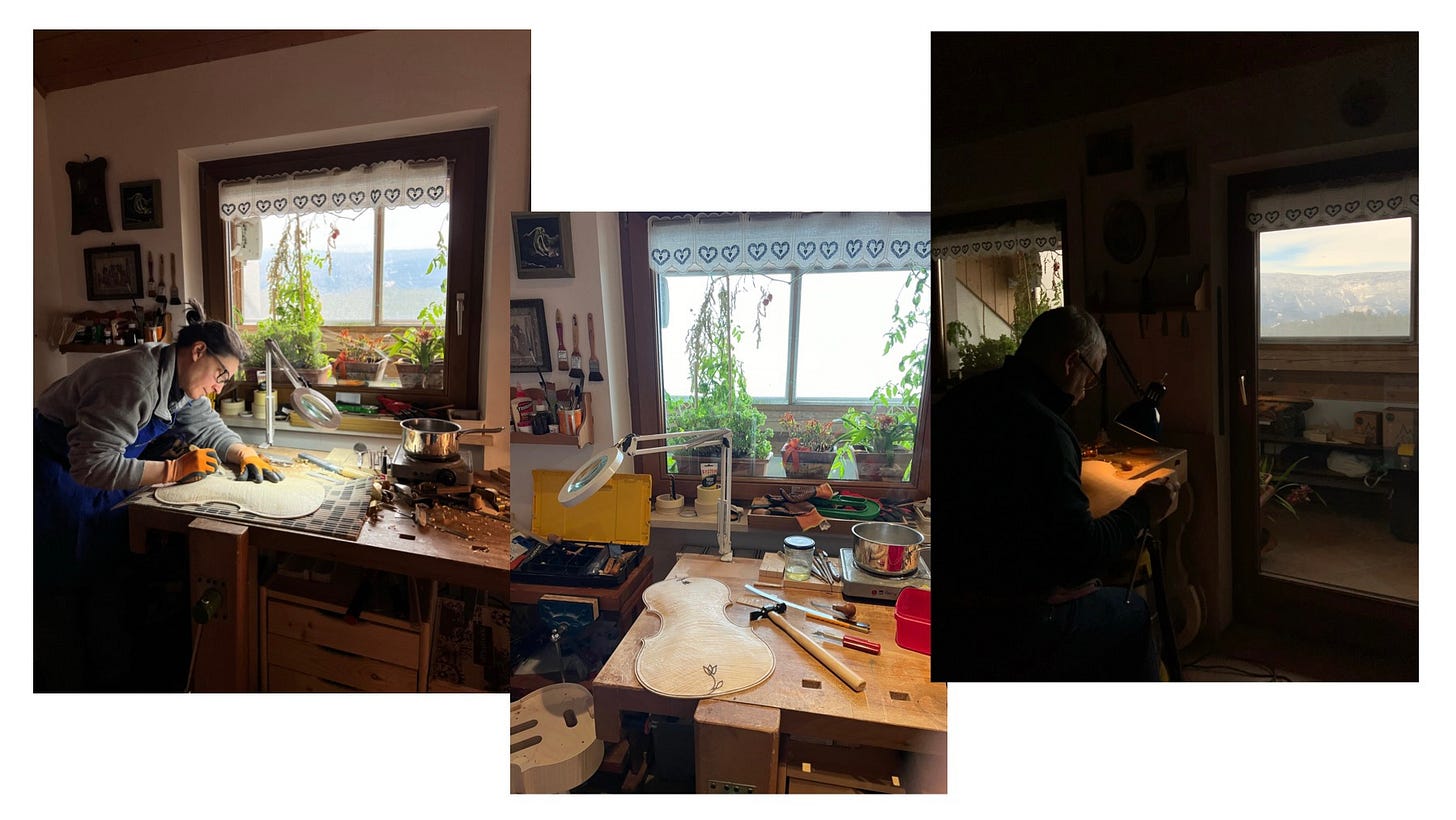Two months ago, we were in Lübeck because we wanted to check again the five strings cello made by Johann Wagner. It is, so far, the only five strings surviving in original conditions.
Unfortunately, the St. Anne Museum’s people in charge now have no idea of this or how to preserve and maintain musical instruments, which is a pity as they have a small but outstanding collection.

Now, we had only two hours (and to study two instruments!), so it was really just checking our doubts and comparing it with our replica side by side.
Our impressions and opinions are:
1. This instrument was used a lot: the wear signs are everywhere, no signs specific of da gamba position but only signs compatible with da Spalla playing. But more than assumptions on the playing position, what strikes is the density of the wear signs. I mean, this instrument was played, appreciated, and used.
2. A small portable bass, like the one in the famous Brueghel painting or in the French screen? Yes indeed. With this thick and short neck, playing simple things like a bass line while standing or walking is easy and comfortable. Why a bass and not a tenor? Because if you tune it in the viola octave, the e string is too long to be tuned to E5.

3. We don’t think it was meant and used only as a bass. You don’t need five strings to play a bass line. Three are enough. Four would be “standard”😱, but here we have five. And it’s nothing exceptional. When used mainly accompanying religious events, it was probably also used as an obbligato instrument, playing melodic parts. If it was used in folk, open-air gatherings, to accompany dances, well, it was probably used as a folk fiddle, playing accompaniment and tunes.
4. Its Lutherie style is very typical of the Borstendorff region. The style was similar in the Vogtländ region, some 150 km south, but the manufacturing level was much higher, as we saw from the Klinger in Leipzig and the other instruments we saw in Markneukirchen. We had a good chat with Veit Heller and Ekkard Seidl about this.
The Borstendorff people carried on the workshop of Hoffmann after him. At the same time, probably the luthiers in Markneukirchen and Klingenthal didn’t have the motivation at all to move to a town as they had florid businesses at home.
5. The Wagner is not a unique, unusual size instrument. There are so many around this size made around this region and time. It was luckily preserved in its original condition, probably thanks to the history of the collection, more regarded as memorabilia of the town's history than a musical instruments collection. It entered the collection in 1883, acquired by a merchant director of the Merchants’ Museum of Lübeck.
Further readings
News from da Spalla world
New strings for Violoncello da Spalla are available! This time it’s modern strings, made by Eliakim Boussoir.
I had the pleasure of testing these strings for a couple of weeks and I got to try different prototypes. I can say they are quite interesting. Silk core, thin gauges, flat wire. All five strings are overspun with flat wire. The first two do not make me miss the plain gut I loved so much! They are rich, dense with colours and easy under the bow. The passage to the basses is smooth, gauges increase smoothly, and I was surprised by a thin G string. The C is still big, of course, but easy and powerful. Good job!!
Updates from our workshop
Featured video of the week
In this video we are using the Wagner replica made by Daniela.













